
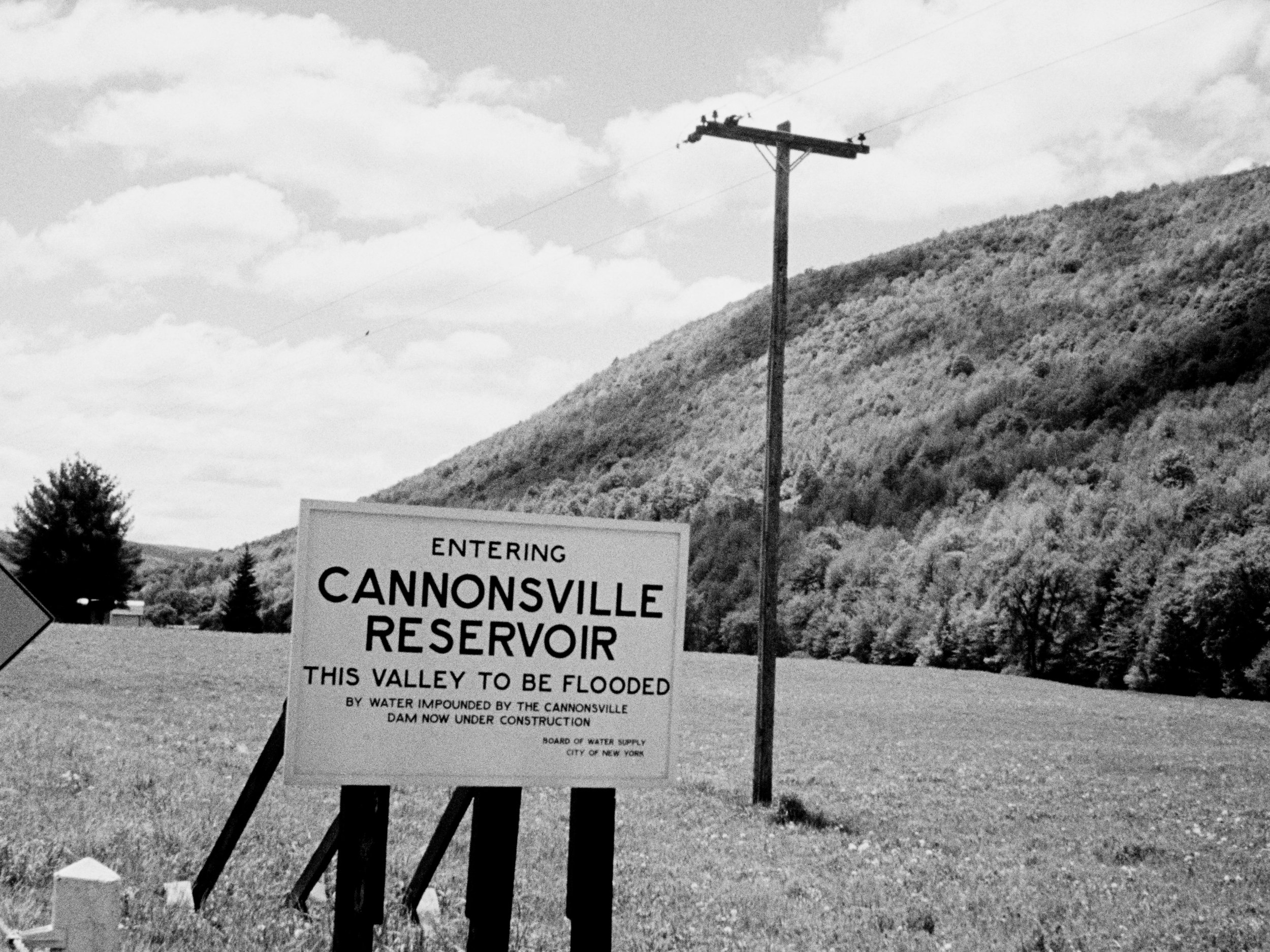

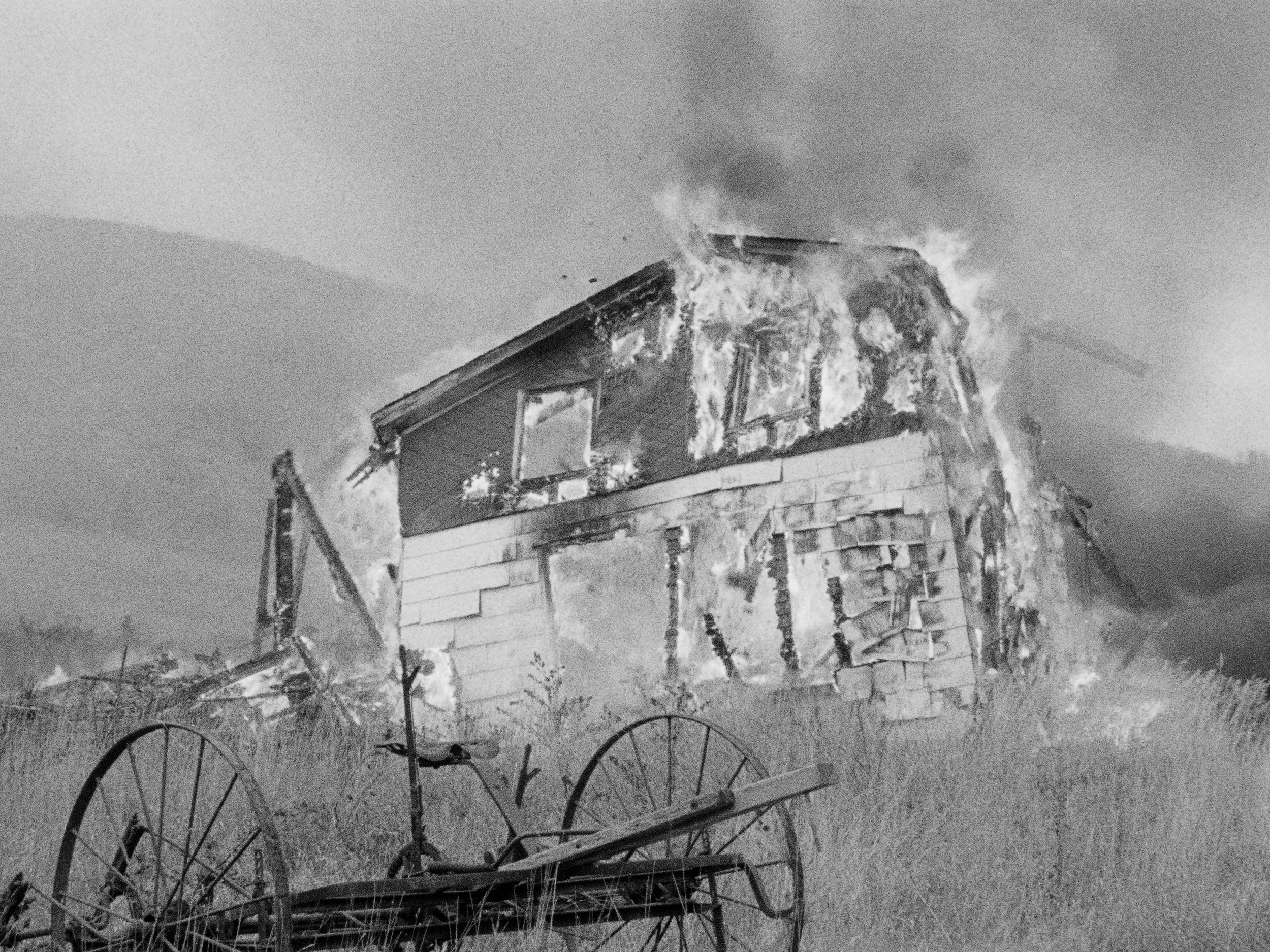



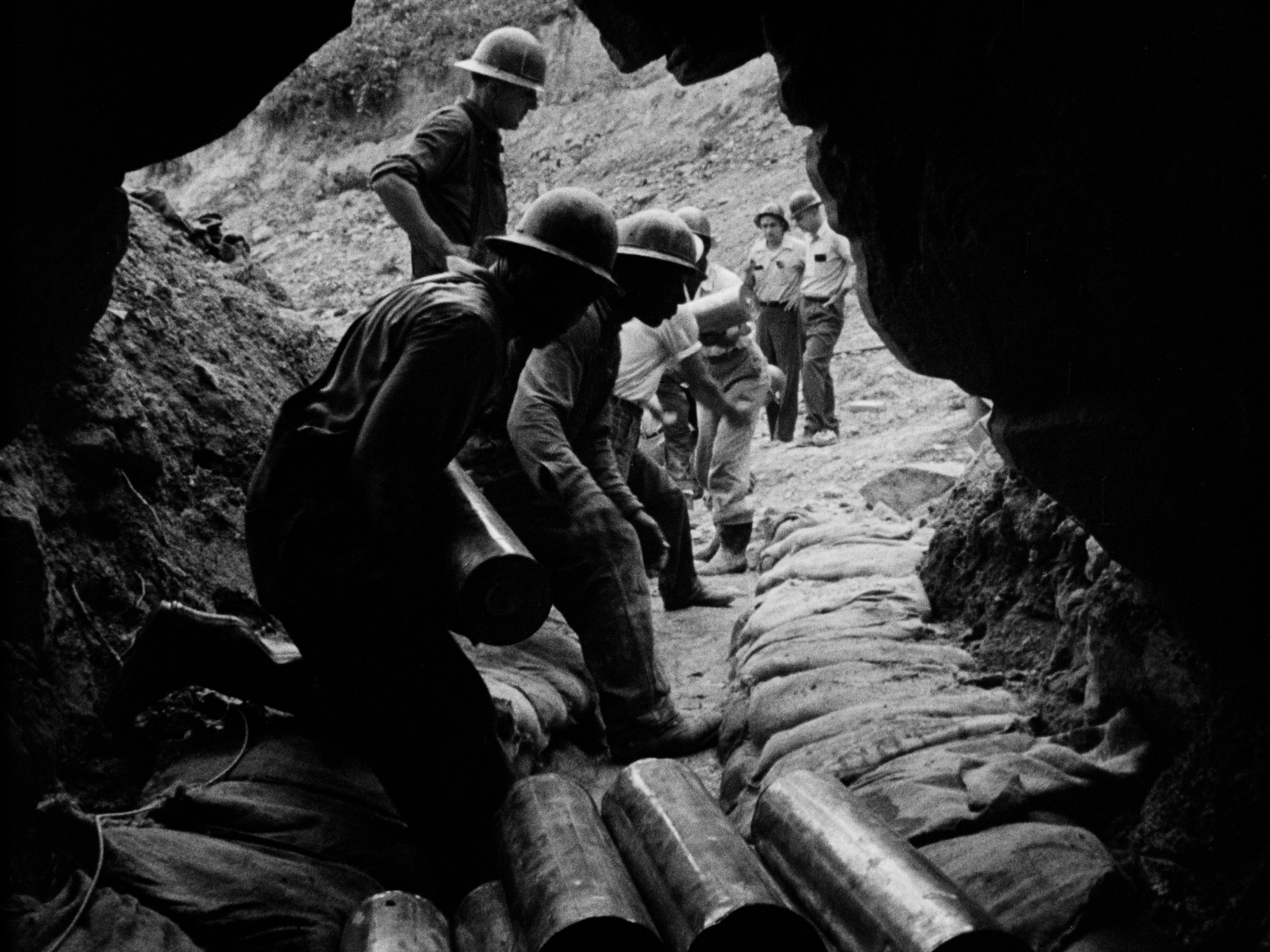

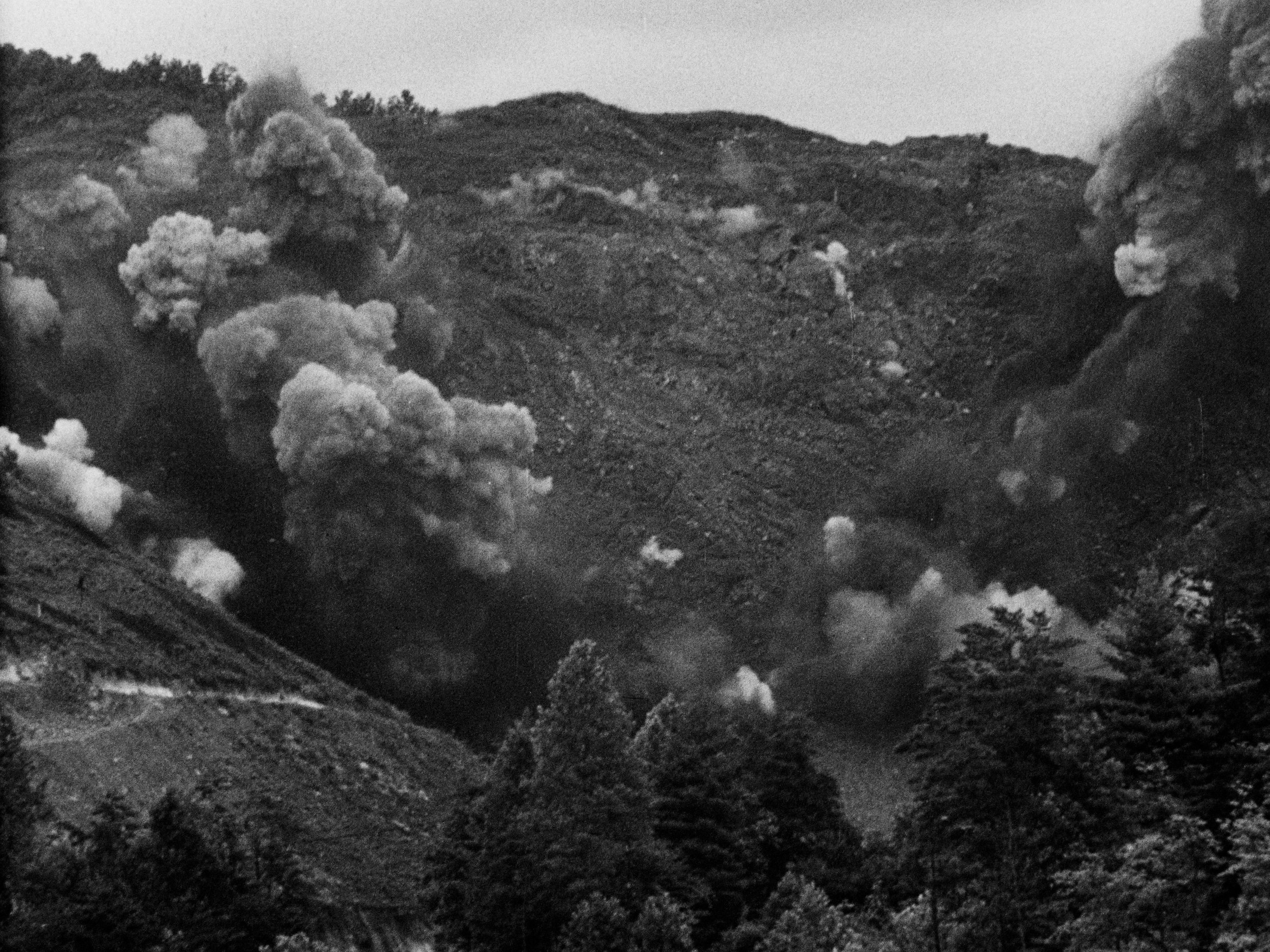

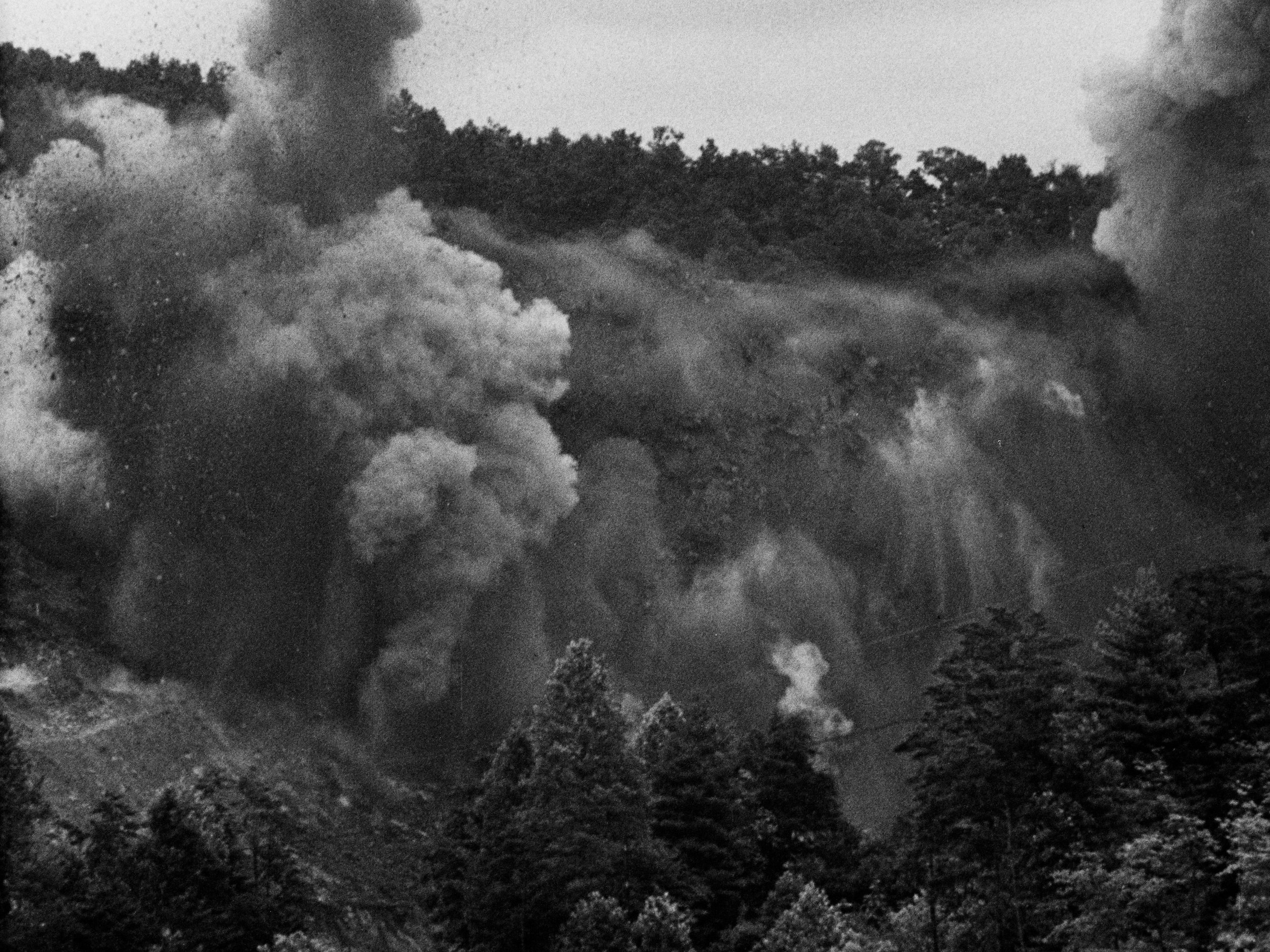



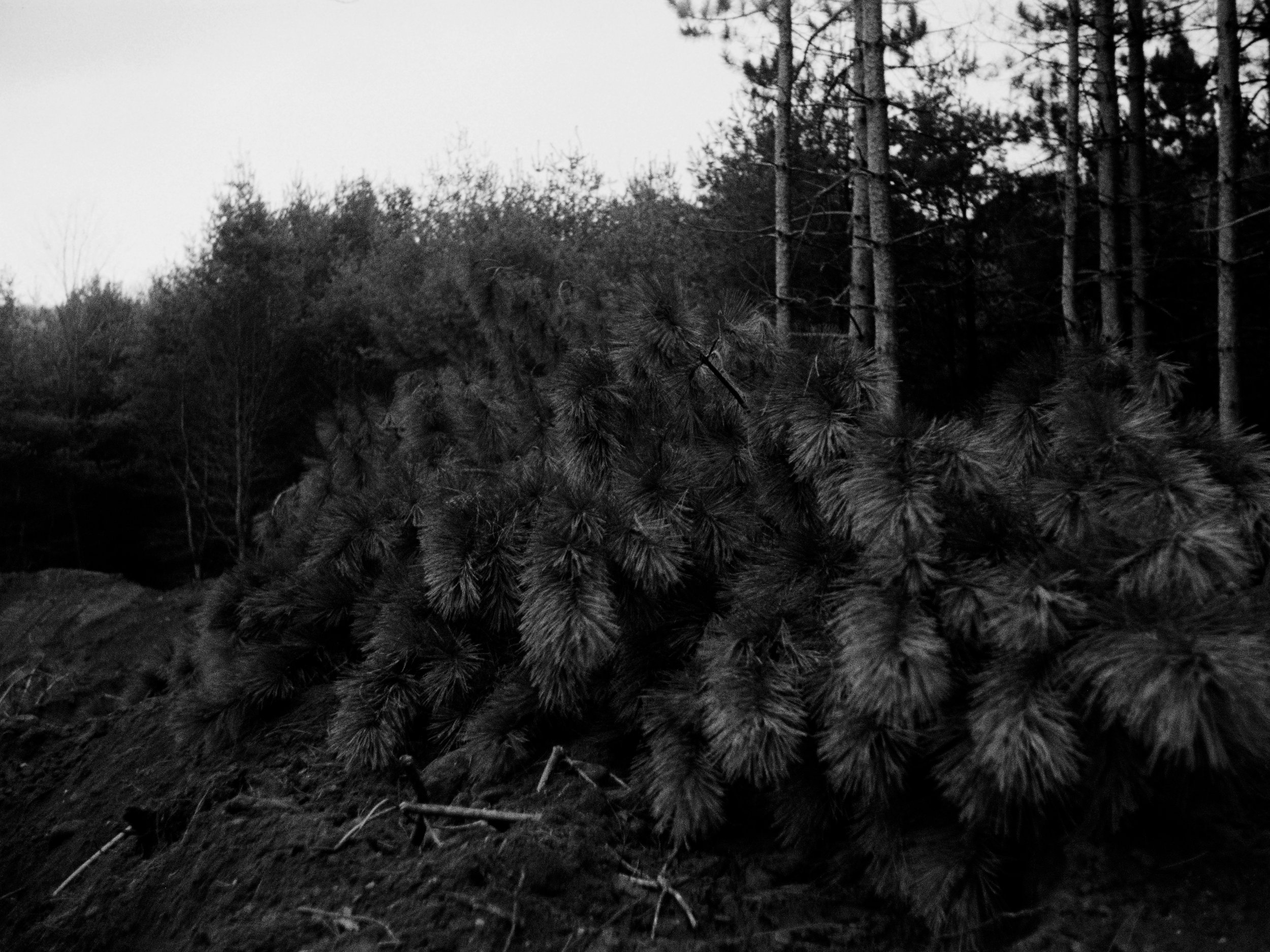


Indian Summer (Jules Victor Schwerin, 1960) (2022 preservation, 28:33, 35mm B&W)
Funded by a grant from the National Film Preservation Foundation
Available as 35mm print
Buy a DVD here (manufactured on demand, expect 3 week arrival)
-
“On the first hot day of summer, an old farmer goes fishing just as he has done for many years on the West Branch of the Delaware River. A young boy, his frequent fishing companion, eagerly takes him to see the first giant bulldozers, which are to begin construction on the Cannonsville Reservoir. In order to provide more water for the cities, the vast project will flood the valley. The old man goes to the general store and walks the length of the valley to talk about his concerns, but most people do not support him. The young people of the valley celebrate at a barn dance. The old man resists eviction with his unloaded flintlock. The next day, he watches as the houses and farms are burned to clear the way. His friend, the fiddler, picks him up and takes him and his few belongings away.”
-
“Photographed in black-and-white / 35mm.
Length 28 minutes
Exhibited at Edinburgh & Venice Festivals, 1960
In the heartland of the Catskill Mountains, New York State, along the shores of the west branch of the great Delaware River, lie a group of farming communities that face a decisive destiny. Their valley, some dozen miles long, is chosen by city engineers as the site for a new watershed and dam.
The farms, owned by the same families since pre-Revolutionary days, will be purchased by the big city to the South, and all the villagers will move on to other, distant, communities.
One farmer, Robert Gregory, a famous Catskill raconteur of 78 years loves the valley and its homespun traditions more than any amount of money. Perhaps his roots go down deeper in the land than do those of his neighbors. Perhaps he merely feels the anticipated loss of familiar landmarks more poignantly. In any event, he decides to resist in some small measure; at least it would be a matter of pride. Unfortunately, his neighbors do not agree with him; they see no point in holding out, in refusing to settle with the government lawyers.
The young people, especially, seem pleased to be moving to larger towns beyond the valley; it promises greater opportunity to find work less onerous than farming; for the women, it would mean more mechanical conveniences. But for Mr. Gregory, and other old-timers, a move holds no charm, no pleasing prospects of better things.
When the engineers arrive and begin tearing new roads out of the woods, and dynamiting the hills, and boring through the mountainsides to make sluiceways to lower watersheds and the pipelines leading to the city, the old man's spirit withers. For one moment he threatens a fight - but that's with his great-grandfather's Queen Anne musket that hadn't fired a round in almost 200 years. But symbolic resistance isn't going to do much good, except for the inner man. He finally agrees to attend a farewell dance, in company with young Ralph, his companion in fishing and nature-lore. But the apparent joyous atmosphere gains no support from the old man; he leaves early and alone seeking solace along the Delaware bank, under the trees in the moonlight.
Next day, firemen from distant towns come and begin burning down the houses, barns and silos - everything must be reduced to charcoal for sanitation purposes; all human and animal habitations must be wiped-out; the water that floods the land must be kept as pure as when it flowed down the mountainsides. The old man watches the devastation all through the night and in the morning, though exhausted beyond measure, he pays a final visit to the old cemetery behind Cannonsville, for even the dead shall not be allowed to rest in peace.
At last the day to leave the old house arrives and he piles his few possessions on the roadside. His friend, the fiddler, comes to "fetch" him and he goes off with the younger man to an uncertain future.
INDIAN SUMMER was "shot" in the Spring, Summer and Fall of 1957. Additional photography was done the following Summer while editing was underway. The editing of the 25,000 feet of film took fourteen weeks, resulting in a featurette of just under 3000 feet. Pete Seeger and his brother Mike of the New Lost City Ramblers decided to compose the background music in Pete's Beacon, N.Y. barn, which they turned into a sound studio for the occasion. Thousands of dollars worth of fine recording equipment was shipped to the barn from New York, so that first-class recording conditions would prevail.
No professional actors were cast for the picture. As children had to be excused from school, and men had to find time away from farm chores and servicing their stores, our production schedule had to be elastic to accommodate so many special situations. Not the least of our difficulties proved to be the highly erratic and uncertain Catskill weather which gave us many hours and not a few days of frustrating production conditions. For the party sequence, we had to feed a couple of communities to be sure we would have sufficient turn-out for "shooting" the scene. Firemen of nearby Deposit, N.Y. came out on Sunday morning to burn down the deserted buildings we specified; the Chief advised us that they all had had such a good time, which a few bottles of whiskey helped fortify, that for a case of "fire-water" they didn't think they'd hesitate burning down the whole "blooming" town.
Early in April, 1960, we returned to Deposit where the only theatre is located, and screened the film for the valley people. They were aroused to self conscious giggling when they saw their neighbors and themselves playing roles; but they seemed deeply touched by the knowledge that what we had photographed had not yet come to pass for them - but was their inevitable painful future. Many of them felt that the film, in some small measure, would keep the valley and the river and the mountains alive for a long time. Even the old man was moved by his own performance, though half the time he wasn't at all certain what we were aiming at; and he had a peculiar sense of a personal immortality through the life of the film.
INDIAN SUMMER will first be released theatrically in New York City through the Rugoff and Becker chain of art theatres. Subsequently, it will be screened throughout the USA and will then go abroad. Contemporary Films, Inc. of New York will subsequently issue the film in a 16mm version.
Jules Victor Schwerin
New York/ December/ 1960”
https://folkways-media.si.edu/docs/folkways/artwork/FW03851.pdf
-
“Mr. Schwerin has been professionally active in the motion picture industry since 1939 when he became a member of the Association of Documentary Film Producers in New York.
Following the War Years, he was employed by two Hollywood studios in the two-year period (1945-46): Paramount (production budget analyst) and Republic (screen story analyst).
In New York, between 1947 and 1951, Schwerin vas self-employed in the company: Jules Schwerin Films and, as contract production employee (writer or director) for numerous East Coast film organizations including: RKO Pathe, NBC Television, Ziv Television, Princeton Film Center, American Film Producers, City of New York Film Unit and Pictura. Contributing an analysis of potential U. S. TV film utilization for use of the Film and Information Division of the United Nations, Schwerin also served the Franco-American Audio Visual Distribution Center, a cultural division of the French Embassy as film adviser. He imported outstanding art featurettes from Europe, i.e. "Henri Matisse" and "Aristide Maillol," initiating theatrical distribution for this kind of film; and for a two-year period maintained a film packaging service to the growing television industry; at one time he represented virtually every important U.S. foreign film distributor and importer in placing the best available motion pictures on television programs.
In 1951 his services were contracted for by Sol Lesser Productions at RKO Pathe Studio, Culver City, California, as supervising producer. Subsequently, he joined the staffs of King Brothers Productions, Odyssey Pictures, Robert Maxwell Associates, and CBS-TV.
CBS-TV recalled him to New York in the Fall, 1953 for a year's assignment as staff film director for ''The Morning Show" and "The American Week." Later, he free-lanced as commercial film director for various New York outfits: Robert Lawrence Productions, Filmways, Inc., Shamus Culhane Productions, Filmakers Productions and with Robert Davis Associates as director and production manager. Going into production in his own company, Folkfilms, Inc. in the Fall, 1957; Schwerin produced INDIAN SUMMER without sponsorship support. He had intended adding a second half to this 28 minute featurette to be called GREAT GETTING UP MORNING and signed Mahalia Jackson, the gospel singer, to a film contract. Unfortunately, after developing a script and scouting New Orleans locations with Miss Jackson, the production failed to bloom due to Schwerin's inability to secure completion financing.
In the past two years, the company has produced numerous commercial films for sponsors; and ahead of it lies a program of feature films, including a New York drama called THE DRIFTERS and a so-called 'race' film entitled: NO PEACE UNDER MAGNOLIAS. In association with the Louis de Rochemont Company. Mr. Schwerin will direct and produce a feature length film based upon the seminal book by the Brazilian official of FAO, Josue de Castro: THE GEOGRAPHY OF HUNGER. Mr. Schwerin is an active member of the Screen Directors International Guild and of the Writers Guild of the West. He is an "occasional" reviewer of films, and an editor on film subjects with the Encyclopedia Americana.
Mr. Schwerin is hopeful that INDIAN SUMMER will be a pilot film for a series to be based upon the interrelatedness of all our social regional history. In the living song-singing, tall-and-short storytelling, the dancing and fiddle-playing of representative regions, the films would tell us some uncommon things about ourselves. Real people - not professional actors - would play themselves, directed, however, to delineate certain traits and rituals: the rural and urban character without glamor or gaudy trappings, humor that is human rather than flip, social rebelliousness and defiance of conventions, the persistence of ideals, the unrealized dream, the frustrated ambition, loving and lovelessness. All of it is brilliantly recorded in our folk-history, but little of this side of life comes through the meretricious inferiority of most motion pictures.
Exploits of folk-heroes are actually highly valued by most of us, though we seem largely unaware of their importance, existence perhaps. For instance: the stories of Paul Bunyan, Casey Jones and Mike Fink are often incorporated in everyday speech; while such eternal folksongs as "Yankee Doodle," "Home on the Range," "Turkey in the Straw," "Sweet Betsy from Pike" and "John Brown's Body" are sung in our schools in their pure and original forms. These songs frequently birth modern "pop" versions but they always outlive their more commercially approved children - while the folklore trample all the sleek magazine stories into oblivion. Recognize them for what they are - living history of the American people that, like beloved and treasured family photo-albums and old letters persist despite pain and the passage of time; cherished because they are always at hand when we want them, expressing our own wishes, sentiments and desires.”
https://folkways-media.si.edu/docs/folkways/artwork/FW03851.pdf
Cast and crew information available on The Movie Database
In the spring of 2022, BB Optics was commissioned by the Delaware County Historical Association to preserve the 1960 film Indian Summer, creating a new digital master and 35mm preservation film elements. The preservation was initiated by artist Charles Cadkin and funded by the National Film Preservation Foundation (NFPF). In 2020 Charles Cadkin had started preservation work with a scan of a 16mm reference print from the Library of Congress. Upon discovering the original 35mm elements at the Museum of Modern Art, Cadkin and the Delaware County Historical Association sought and received a revised NFPF grant to create new 35mm preservation elements and a 4k digital scan. BB Optics was hired to perform this preservation work. Colorlab created a 4k overscan of the original camera negatives. Two new 35mm preservation prints were struck and a new 35mm negative. One 35mm print was donated to MoMA and one belongs to the Delaware County Historical Association.
- Bill Brand and Sarah V. Hartzell
The film documents the destruction of Cannonsville, NY as its residents are forced out in order to make way for a reservoir that will supply New York City with additional drinking water. The film speaks to many social and political issues that remain highly debated topics throughout American history: environmental justice, eminent domain and property rights, and rural vs urban interests. The film was last digitally scanned in the mid-to-late 1990’s and this scan has only recently become publicly available. The ‘90s scan was an interlaced low resolution standard definition file with a greenish cast at 30fps, rather than 24fps as the film was meant to be shown. See before and after stills from the two scans of the film above.
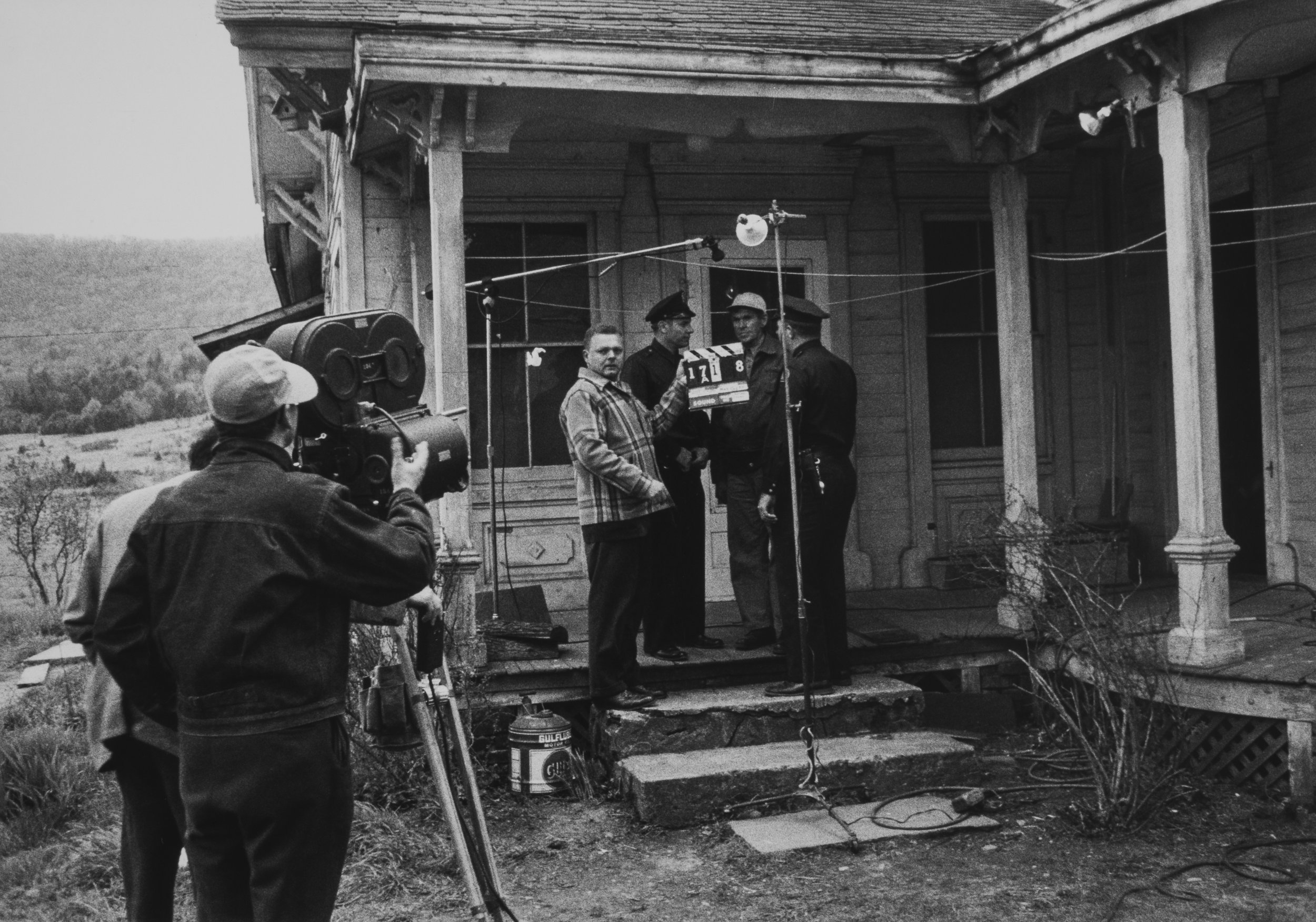
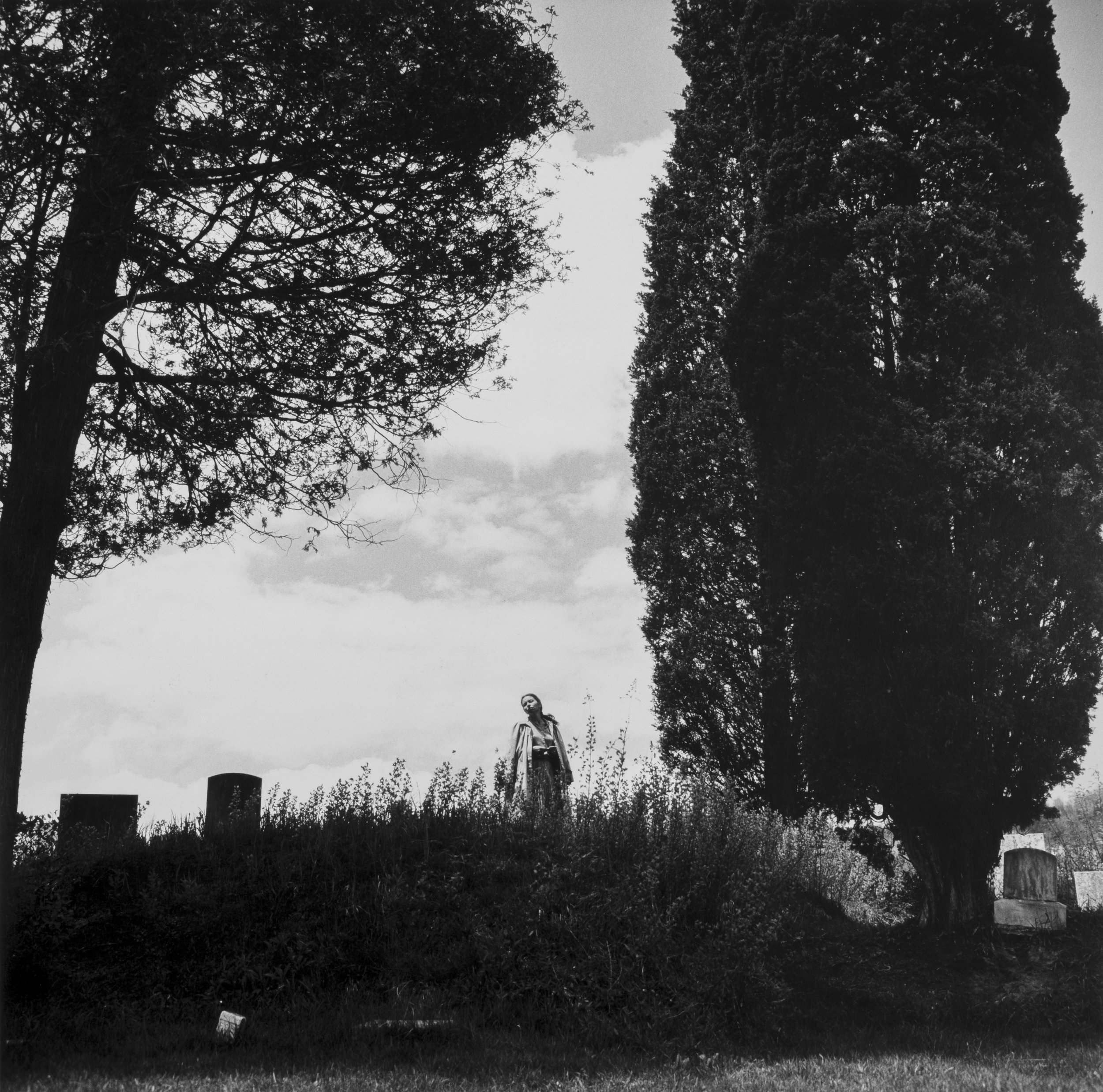
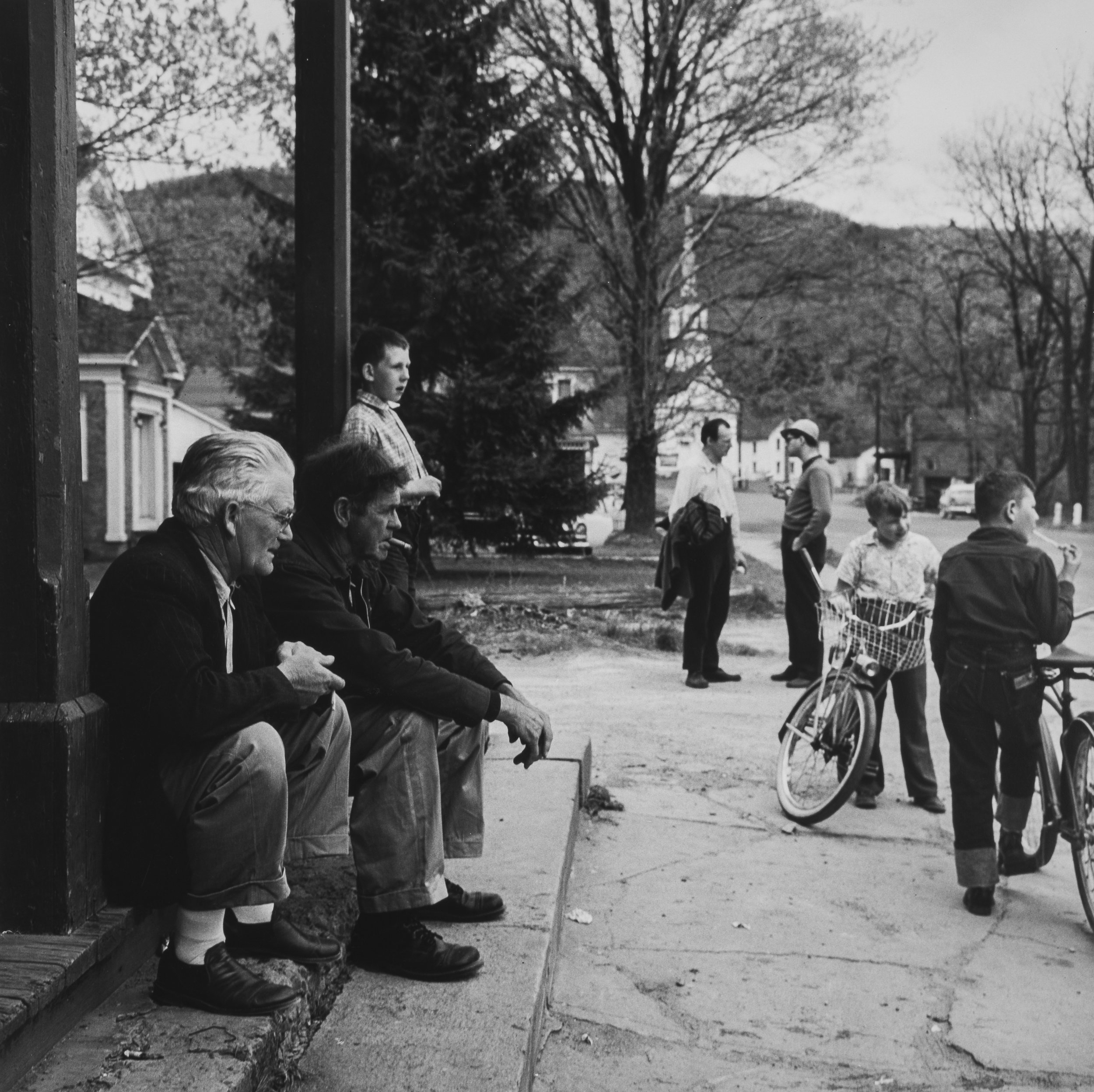
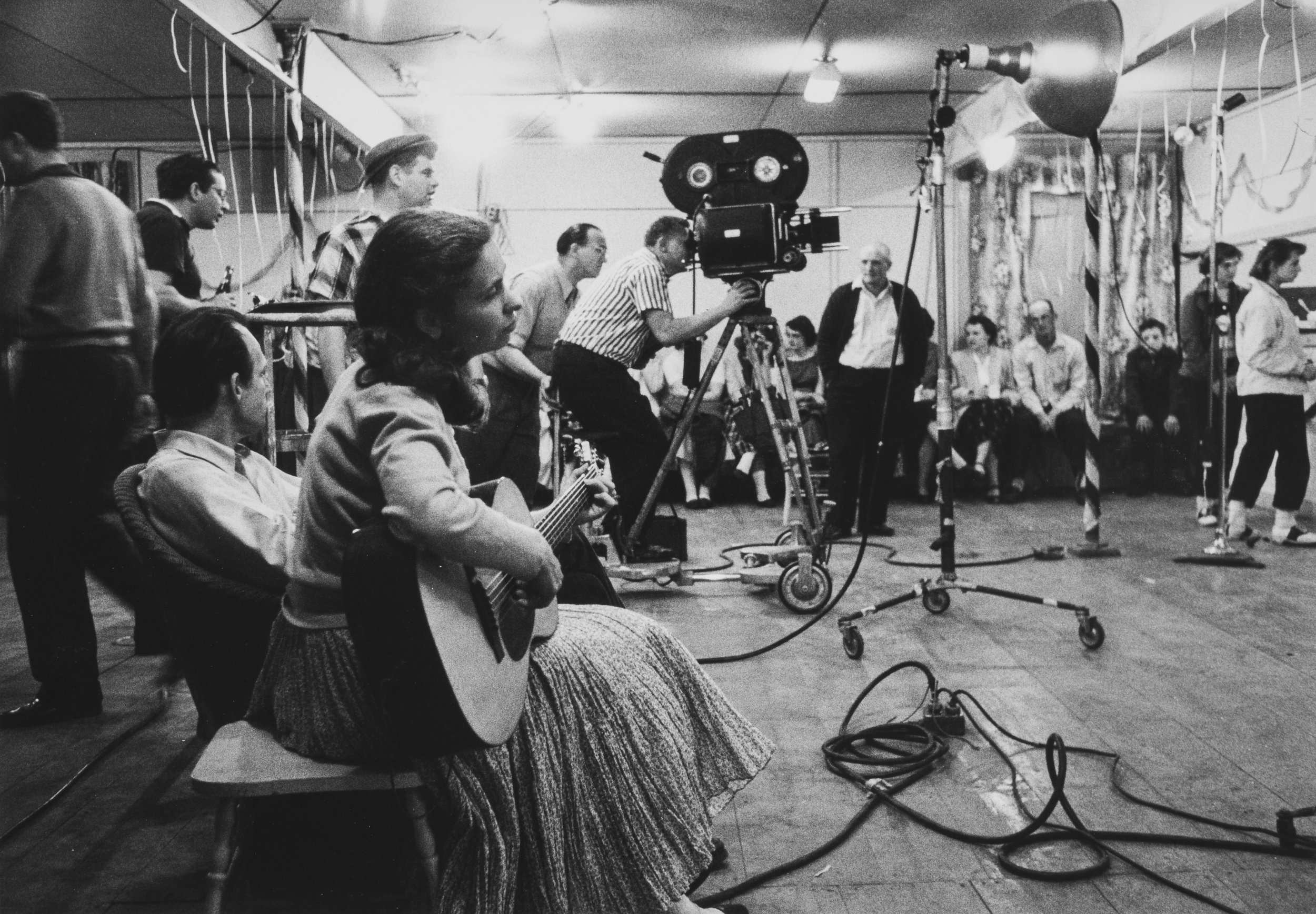
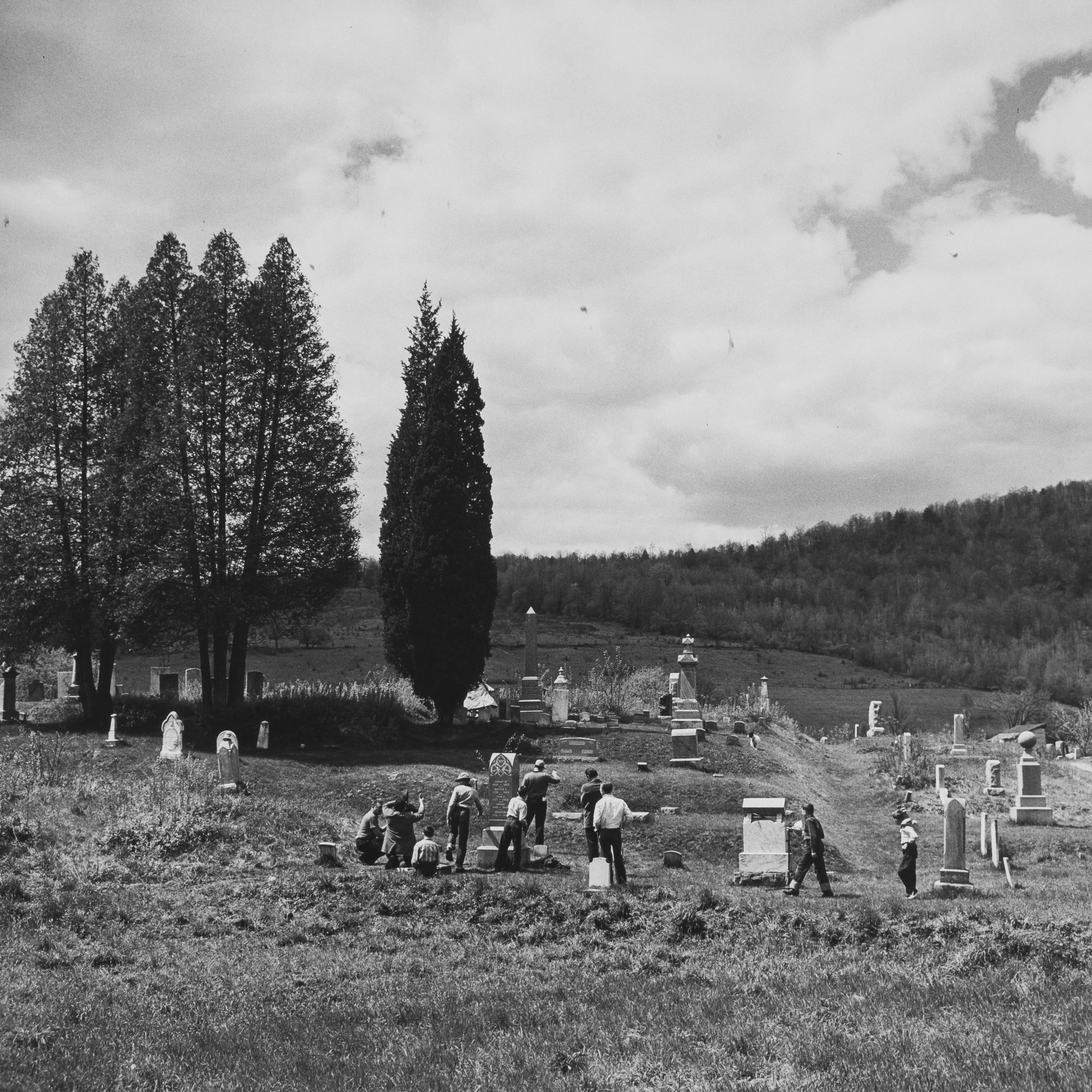


Behind the scenes photos from the production of Indian Summer, provided by Chuck Schwerin and scanned by Jacob Mroczek.
SCREENINGS:
Deposit State Theatre, Deposit, NY
Mimesis Documentary Festival, Boulder, CO
Delaware County Historical Association, Delhi, NY
2025 Yager Museum of Art & Culture at Hartwick College, Oneonta, NY